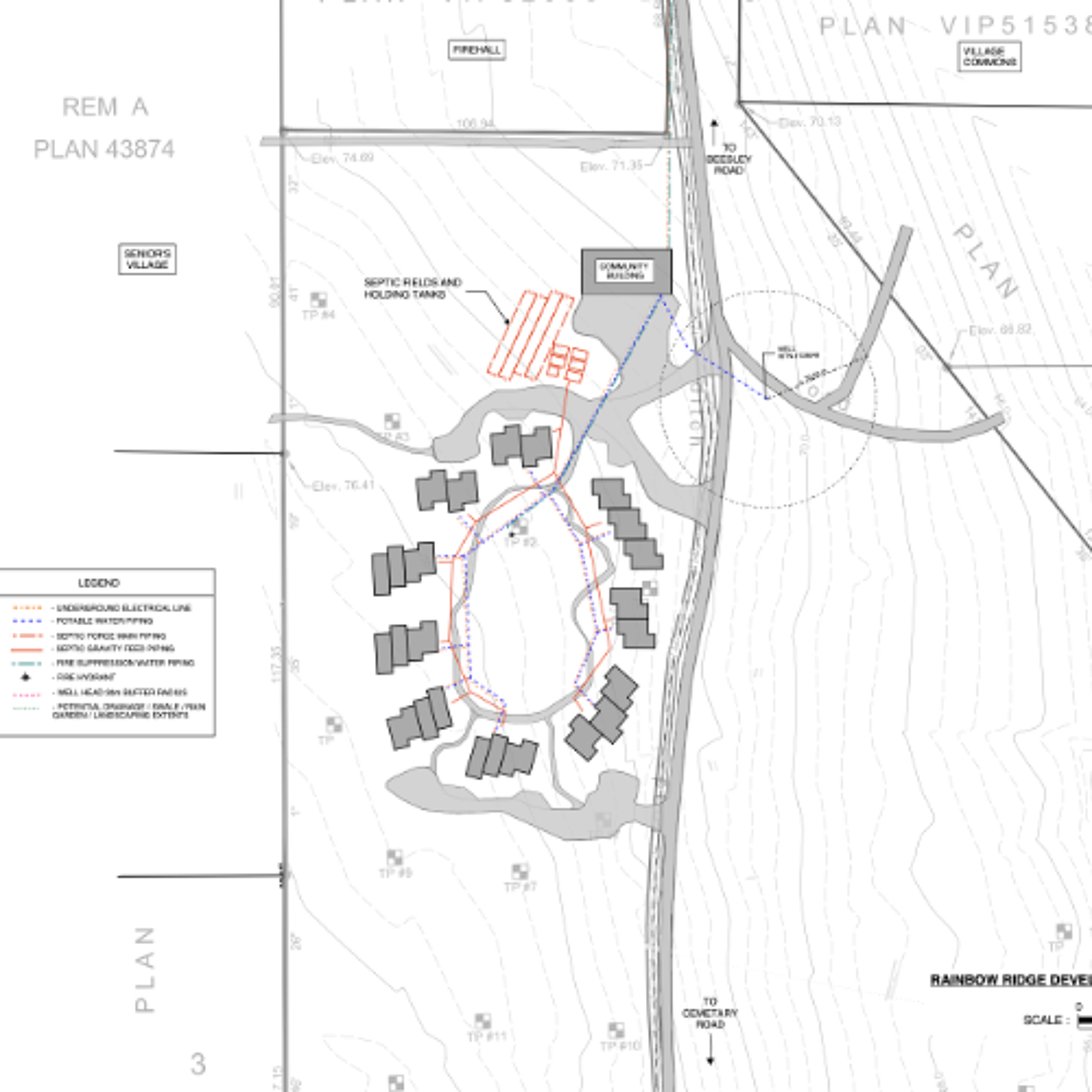Firesmarting Rainbow Ridge
- Author
- roy.hales9.gmail.com
- Published
- Tue 25 Mar 2025
- Episode Link
- https://soundcloud.com/the-ecoreport/firesmarting-rainbow-ridge
Roy L Hales/ Cortes Currents - There hasn't been a major wildfire on Cortes Island for decades, but this could change as our summer’s grow hotter and drier. The Rainbow Ridge Affordable Housing project is being designed with this in mind.
“The main idea is to try to have more of a FireSmart community and get rid of the conifers that are much more prone to embers catching fire and then catching the neighbor's houses and vehicles on fire, like we saw in the California fires this winter,” explained Mark Lombard, speaking on behalf of the Cortes Housing Society.
“We're also going to try to incorporate deciduous trees into the landscape of the 24 units, so that in the summer time you'll have nice leafy, shady zones around the houses in key spots. So that you don't get, for example, overheating in the summer midday and afternoon sun from the south and west, while still allowing our buildings to have good access for passive solar design and solar photovoltaics on the roofs of the buildings.”
“Fire smart principles in general are to not have conifers - firs, cedars and hemlock trees - within 10 to 20 meters of your house. So when there are embers that fly ahead of a fire, they won't land in those trees, catch them on fire and then ignite the buildings around them. Using siding that's not going to be flammable like cedar; using metal or plaster as siding; designing your soffits so that the embers can't get trapped and then catch the roof on fire. We're going to use metal roofing which is very fire resistant.”
“The way you do your landscaping is really important. If you put in a lot of hedges, for example, that is a real problem because embers can catch those on fire and then it's really hard to protect the structures. So trying to do a fire smart architeure site plan as well as the specific landscaping is the general idea.”
“One of the big things for Cortes Island, if we have a major emergency our current plan is that we'll evacuate the island and that is expected to take about 40 - 48 hours - primarily using BC ferries. However, we know that if there's a major wildfire that starts, for example in Carrington, with a big northwesterly in five hours we could have serious fire conditions throughout the island.
“So we need to create places where we can do what's called ‘shelter-in-place,’ which is have a cleared area that has no trees for four times the height of the nearest trees nearby. We don't really have very much of that on Cortes, as everybody knows. There aren’t a lot of big cleared areas. One of the areas that was the most likely place that we want to shelter in place and use as an anchor point in a major wildfire would be the training grounds at the fire departments.”
“In the case of Manson's Landing, we had trees that were really tall directly adjacent to the helipad, and we did not have anywhere near the necessary four tree lengths. So now we've cleared the area to expand the training yard and directly behind that. We’re not going to have any tall conifers. So we've created a much more defensible place to ‘shelter-in-place’ on the south end of Cortes, right by the fire hall, which we think of as a bit of a multi-solving approach.”
You have been listening to an interview with Mark Lombard about the Fire Smarting aspects of Rainbow Ridge.
